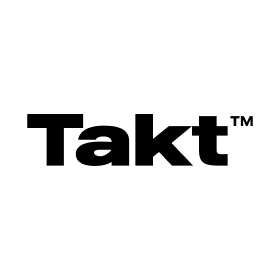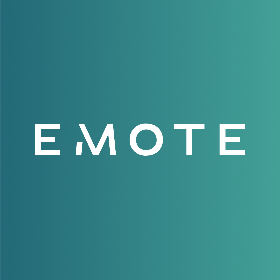
9 Tips To Avoid Ambiguity When Writing Requirements For A Web Project
Good communication is the foundation of every good relationship. If parties are not on the same page and do not understand each other, they will be unsatisfied and the ties hardly ever will last. To communicate avoiding ambiguity is essential when you deal with a digital agency and want to explain the requirements for your web project.
Poor or unclear communication is highly frustrating for both the client and the web agency working on your product. Developers may have to call the client back several times asking for more explanations or spend much time designing features and functionalities that do not meet the client’s expectations.
On the other hand, the client may end up with a product that doesn’t fit his requirements and will not serve his business as it should. All that may quickly lead to business disruption.
The reality is that to translate what is in our mind is not easy. Things that we take for granted may be entirely foreign for our counterpart. Alternatively, the way we explain them may paint an entirely different picture in the other person’s mind. Moreover, if the client doesn’t have a software background, he may use misleading or confusing terminologies.
To make everything even more challenging is the fact that it is not easy to recognize on our own when requirements are not well-written or ambiguous.
However, there are a few tips you may consider to help you avoiding communication problems with your web agency. If you follow some simple suggestions, your require-ments will be, and the overall quality of your project will be enhanced.
What Is Ambiguous Communication
First of all, it is essential to define what is considered ambiguous requirements.
As a general rule, we can say that a requirement is ambiguous when it is open to interpretation.
For instance, let’s say you need to create an e-commerce website and you tell your developer that single products must be easily accessed. The meaning of “easily” can have several interpretations. For some developers that may mean to have products displayed on the front page, for others to create a landing page, others again may think of adding a button linking to the products list, and so on.
Therefore, to avoid ambiguity and disappointment, you need to be specific on what is your idea of “easily accessible.” If you say that products must be displayed on the front page, there is no room for interpretation, and your requirement now is crystal clear.
Several factors may contribute to ambiguity like, for instance, assuming that the other part knows what you are talking about while in reality, the context is not clear.
Another cause of ambiguity is when a requirement is vague and does not include specific details. Again, miscommunication may result from not using proper content and grammar structure while writing the specifications.

9 Tips To Avoid Ambiguity
Here is a list of best practices to create well-written requirements that avoid ambiguity, confusion, and misunderstandings.
1. Write Explicit Requirements
To be explicit means more than mention the feature you want to implement on your website. You must be specific, detailed, and avoid assuming that the reader knows what you mean.
Even if you think that the reader must know what you are talking about, avoid assump-tion. Write down even what should be assumed and don’t be afraid of being repetitive if this is needed.
To make your point explicit and super clear, it is a good idea to add examples of what you are looking for.
2. Would and Should Must Be Avoided
Would and Should are two words prone to generate unclarity and do not define a specific task. They convey the idea of being optional, and you do not want to give options you want a specific requirement.
For instance, if you say “the field in the form should fill automatically”, the developer may decide to implement this functionality or not depending, for example, on how complicated the implementation is.
However, if you say that the form will or must fill automatically, it is readily understood that the feature must be implemented no matter what.
3. Be Careful With Adverbs
Adverbs are great at causing ambiguity. Adverbs like generally, reasonably, usually, normally, and so on are not specific and are open to interpretation. If you say that a click-to-action button must be reasonably visible, the developer can place it wherever he feels the button is visible. His judgment on that may, of course, differ from yours.
If you write the same requirement saying that the click-to-action button must be centered on the screen and above the folder, the developer will not doubt what to do and implement the feature in no time. As a result, you will be satisfied with the result.
4. Absolute Modifiers Add Clarity
Absolute modifiers are words like only, always, unique and so on. They describe a quality that is either present in full or not present at all and that avoid ambiguity.
Here is an example. There is a difference in saying “the writer will be able to add pictures manually” and “the writer will only be able to add pictures manually.” The second phrase is more specific than the first one, and it excludes the possibility to have an automatic function to add pictures.
5. Use Pronouns Carefully
If not used correctly, pronouns can create ambiguity in your requirements. You must always make sure to which noun, or antecedent, the pronoun is referring to.
For instance, think about this phrase: “When the user clicks on the main menu a drop-down list will appear. This will allow the user to…” It is not clear if “this” refers to the main menu or the drop-down list. To add clarity, you can rephrase the same sentence as follow: “When the user clicks on the main menu, a drop-down list will appear which will allow the user to…
6. Write Using Consistent Terms
Writing a requirements list is different from writing a novel or an article to entertain an audience. Therefore, there is no need to be creative in your writing.
Consistently use terms, even if that may sound as repetition, to not confuse the reader. If in your requirements there are terms with similar meaning but not exactly the same, you may opt for adding a glossary to clearly explain to what each term refers.
7. Avoid Abbreviation Altogether
Abbreviations are a useful shortcut to make your writing shorter and more comfortable for you. However, sometimes abbreviations may not be adequately understood by your reader.
To avoid any misunderstanding, always use full English words and do not include any abbreviation in your requirements.
8. Short Sentences and a Clear Layout
Using short sentences is a good practice for most kind of writing. Short phrases that go straight to the point make texts very easy to read and, most importantly, easier to understand. If you see that one of your sentences is longer than two lines, break it down into multiple phrases.
Additionally, use some visual elements to facilitate the reading and memorizing of your text. For instance, proper use of list and bullet points helps a great deal in adding clarity to your writing.
9. Ask For Review
Before you submit your requirements, ask somebody to review what you have written and ask for his comments. As we mentioned previously, it is incredibly challenging to evaluate our writing. Therefore, a second opinion can be entirely enlightening to expose possible faults and ambiguities.
Alternatively, you can refrain from submitting your requirements as soon as you have completed them. Let your document sit and come back to it after a few days. You may be amazed at how many ambiguities you can spot when you read it after a while.
In over 10+ years of experience with international clients, we know all too well how important is to have well-written requirements for a project. It saves the developer time but most important will bring you the best results that meet your expectations.
Here at QPSoftware, we believe in lasting business relationships, and for this reason, we decided to give you a helping hand on how to write clear requirements without ambiguities. Follow the steps highlighted in this article and your project will not go wrong.
As a leading web agency in Shanghai, we are genuinely concerned about delivering the best projects to our clients. Besides websites and ecommerce platforms, we can develop WeChat Web apps and WeChat Mini Program.
Let us know what your requirements are, and we will create the perfect solution for your business. You can also check our best web design tools for further reading.


























